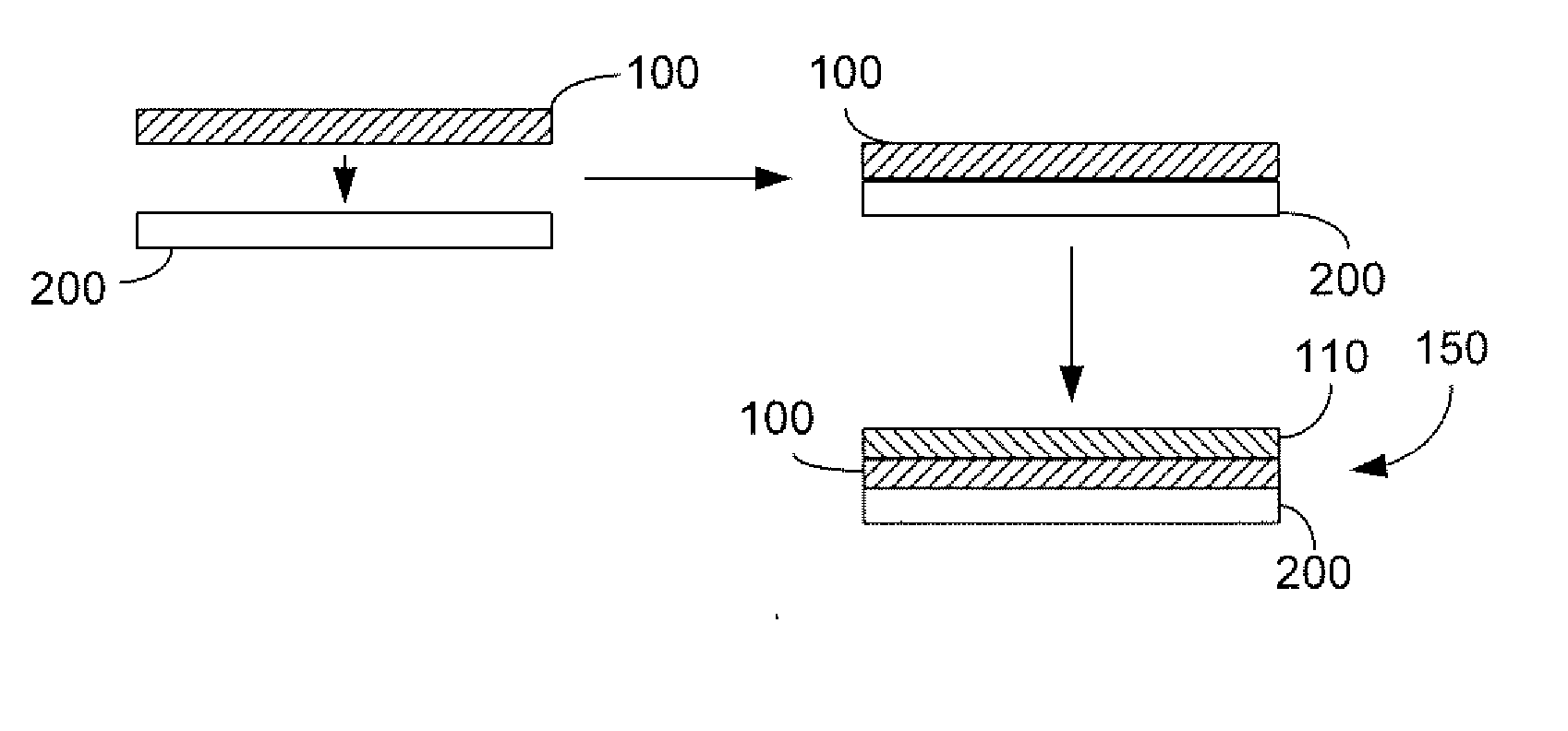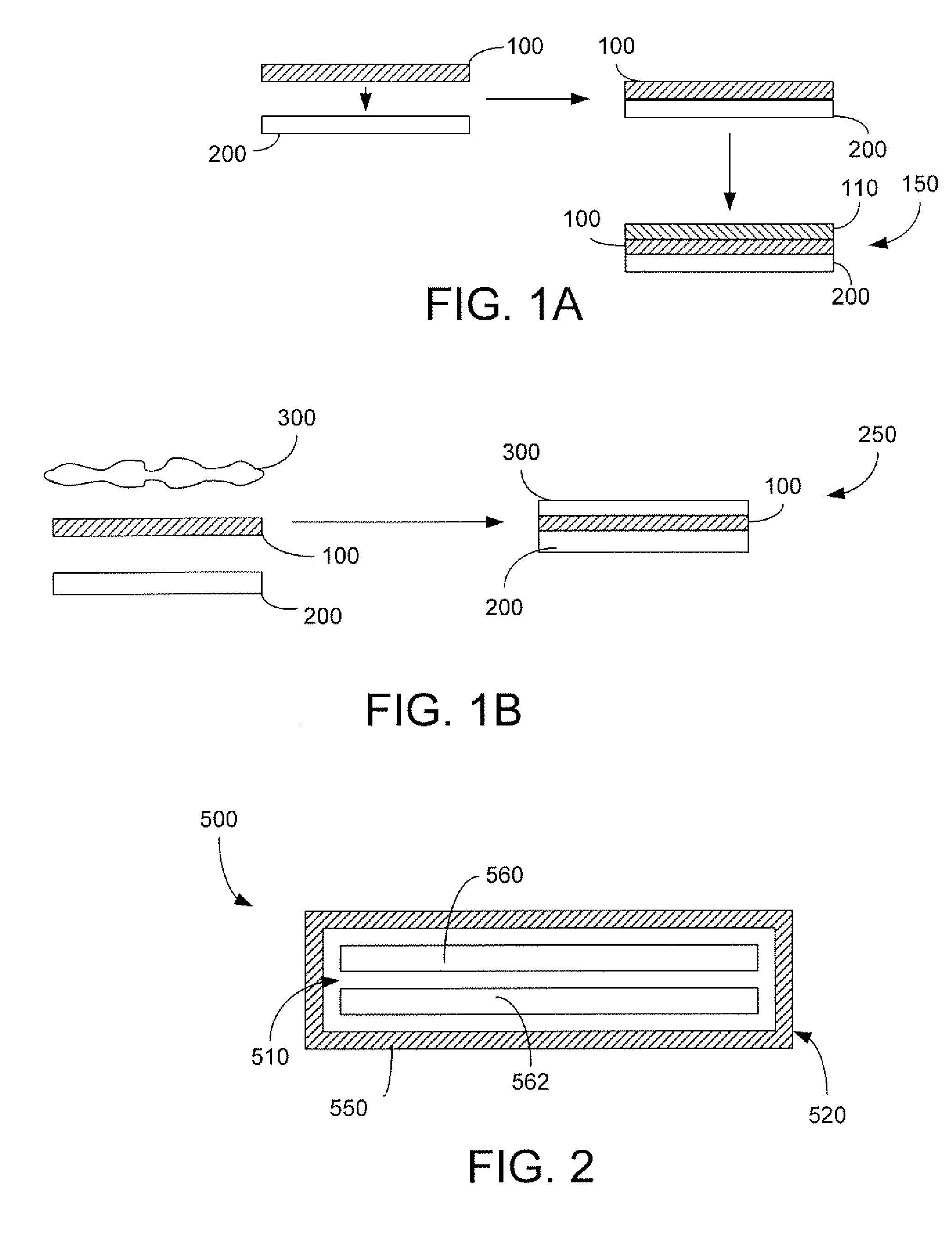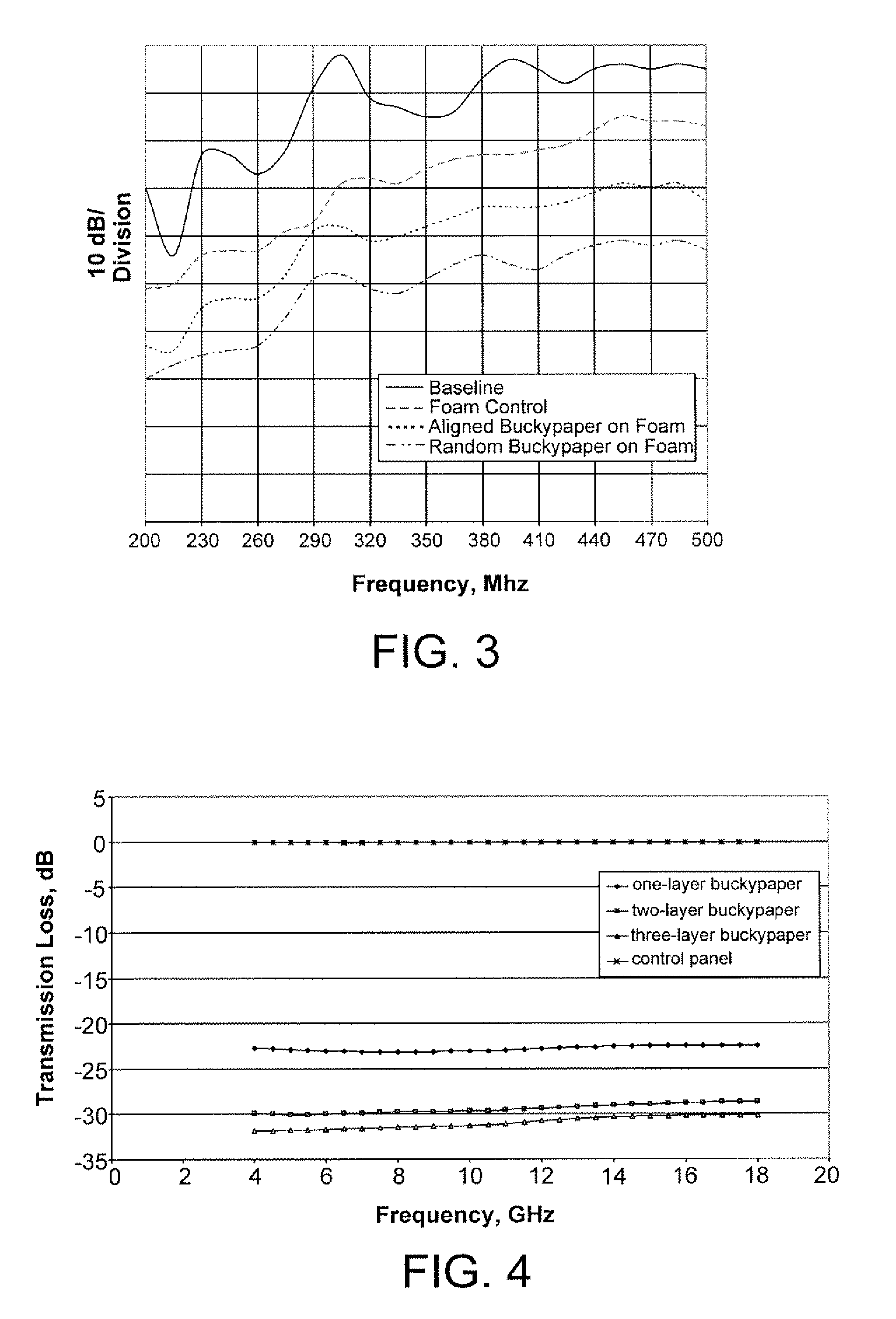Electromagnetic Interference Shielding Structure Including Carbon Nanotubes and Nanofibers
a technology of electromagnetic interference and shielding structure, which is applied in the field of materials useful for shielding electromagnetic radiation, can solve the problems of increasing fabrication cost, increasing device weight, and corrosion problems in long-term applications
- Summary
- Abstract
- Description
- Claims
- Application Information
AI Technical Summary
Benefits of technology
Problems solved by technology
Method used
Image
Examples
example 1
EMI Attenuation of a Foam Sandwich Composite Structure with Two Layers of Randomly Dispersed SWNT Films
[0045] An EMI shielding structure which included randomly dispersed nanotube films was tested for radio frequency (RF) attenuation.
[0046] Purified SWNTs were obtained from Carbon Nanotechnologies Inc. (Houston, Tex.). Nanotube films were prepared from the SWNTs as follows: The SWNTs were dispersed with sonification into distilled water containing Triton X-100 surfactant in order to form a stable suspension. The SWNT concentration in the suspension was 40 mg / L. Next, about 12 to 15 liters of suspension was filtered using a custom-made filter with a 0.45 μm nylon filter membrane from Millipore, Inc. (Billerica, Mass.). The filtration process yielded a SWNT film (i.e., a sheet or membrane). The film was then washed using isopropanol. The length and width dimensions of the SWNT film were about 9 inches by 9 inches.
[0047] Composite structures were prepared as follows: The film was cu...
example 2
EMI Attenuation of a Foam Sandwich Composite Structure with Two Layers of Aligned SWNT Films
[0050] An EMI shielding composite structure which included magnetically aligned nanotube films was tested for RF attenuation. The composite structure was prepared and tested as described in Example 1, except that the SWNT films were produced under the influence of a magnetic field to align the nanotubes. The SWNT films were cut and assembled with foam such that the two layers of SWNT films had the same alignment direction along the 4-inch direction of the samples.
[0051]FIG. 3 shows the results of the EMI shielding tests over a low frequency range between 200 MHz and 500 MHz for the aligned composite structure in comparison to a baseline (empty or without any shielding materials) and a 2 mm thick ROHACELL PMI foam panel (control panel). The tests showed that as compared to the pure foam control sample, the composite structure achieved attenuation as great as 16 dlB at about 500 MHz, and an a...
example 3
EMI Shielding Composite
Foam with One, Two, and Three Layers of Randomly Dispersed SWNT Film Surface Skins
[0052] EMI shielding composite structures which included one, two, and three layers of randomly dispersed nanotube films were tested for RF attenuation. The composite structure was prepared and tested as described in Example 1, except that the EMI shielding test was performed over a 4 GHz and 180 Hz range.
[0053]FIG. 4 shows the results of the EMI shielding tests in comparison to a foam panel (control panel). The tests showed that as compared to the pure foam control sample, the composite structure achieved attenuation as great as 30 dB.
PUM
| Property | Measurement | Unit |
|---|---|---|
| thickness | aaaaa | aaaaa |
| thickness | aaaaa | aaaaa |
| frequencies | aaaaa | aaaaa |
Abstract
Description
Claims
Application Information
 Login to View More
Login to View More - R&D
- Intellectual Property
- Life Sciences
- Materials
- Tech Scout
- Unparalleled Data Quality
- Higher Quality Content
- 60% Fewer Hallucinations
Browse by: Latest US Patents, China's latest patents, Technical Efficacy Thesaurus, Application Domain, Technology Topic, Popular Technical Reports.
© 2025 PatSnap. All rights reserved.Legal|Privacy policy|Modern Slavery Act Transparency Statement|Sitemap|About US| Contact US: help@patsnap.com



